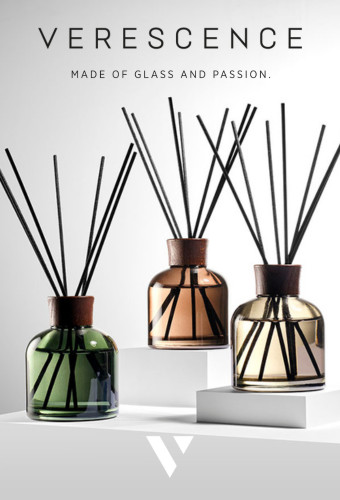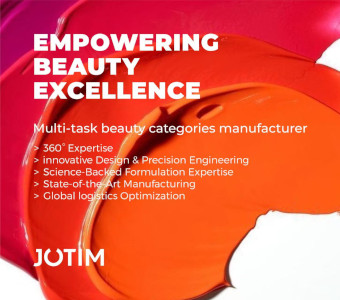What problems does this new material solve for the cosmetics industry?
Bister - There are currently no special legal requirements for materials and articles that are specifically intended to come into contact with cosmetic products. For this reason, Regulation (EU) 10/2011 for plastic materials and articles that come into contact with food was used as the basis for the investigation. The migration testing concluded that the new PCR PP material meets the requirements of Regulation (EU) 10/2011, Regulation (EC) 1223/2009 and REACH EC (No) 1907/2006. This makes it ideal for use as primary packaging for cosmetic products.
What does this mean for usability? Can all components of cosmetics packaging be made from this material?
Bister - This newly developed material, consisting of at least 95% recycled PP plastic, opens up new horizons for mascara packaging. The thread part and bottle, which are both packaging components that come into direct contact with cosmetic products, can now be made entirely from PCR PP for the first time.
This marks a breakthrough for the packaging market of water-based mascaras, as these dominate the mascara market with a share of over 70%. As the market for components that come into contact with formula does not accept low quality or a lack of suitability, the use of PCR PPs was not previously possible for these components, except in isolated cases. Thanks to this new development, packaging for water-based mascaras can now be made from recycled PP plastic for the first time. This enables beauty brands to increase the PCR content of the entire packaging to over 80%, depending on the masterbatch used.
What other benefits does this recycled packaging material offer?
Ziemann - As the material is color-neutral, it can be used to create color and effect combinations that were previously not possible with conventional PCR PP. Conventional PCR PP either had significant impurities or was provided with color batches by the manufacturer to compensate for batch variations in color. Examples of this would be deep black or very light colors such as bright white, light yellow or light pinks.
As can be seen in our collection, it is also possible to create masterbatches with complex effect pigments without having to sacrifice the brilliance of the effect or compensate with absurdly high dosages. In concrete terms, this means that visual effects such as metallic sheen or chrome pigmentation can now be easily implemented on a PCR PP basis without any loss of quality.
Another interesting point for our customers is that there are no longer color fluctuations from conventional PP. Packaging components previously made of conventional PP can now be produced using the new PCR PP with a guarantee that the shade and nuance of undertones will remain the same. Visually, there is no recognisable difference between components made from conventional materials and PCR. Consequently, converting existing product lines that are already on the market to PCR PP is easy.
Post-consumer recycled PP is a market breakthrough. How does the processing of the new material compare to conventional PP?
Ziemann - Similar to the virgin types we use, the polymer can be processed with the same tools. In many cases, the same processing parameters and cycle times can even be used.
A nice side effect of the new material is that it is completely odorless compared to other PCR PP materials, both during production on the machine and later in retail.
An important consideration in terms of sustainability: how does this innovative new material perform in terms of CO2 savings?
Bister - If we look at the impact of replacing conventional PP with the new PCR PP for the cap, bottle and thread part, on a material basis alone and without taking the process into account, CO2 emissions can be cut by 75%.
How was the material developed?
Bister - The company WIS-Kunststoffe, a long-standing partner of GEKA, has set itself the goal of producing high-quality rPP that comes from a stable and controlled source and also fulfills the high regulatory requirements of the cosmetics industry. In close collaboration with WIS- Kunststoffe, GEKA has optimized and qualified these materials for use in the packaging production for Color and Care Cosmetic. This means that we are now able to offer packaging with a previously unattainable strength of color and effect, which is unique in rPP so far.
The products presented at Cosmopack made from this sustainable material looked great. What was special about the samples?
Ziemann - To start with, the majority of the units presented were finished with a combination of classic hot foil stamping and our shadow printing technology (decoration of plastic packaging without applying any further foils or colors), which works very well on the material. Pure shadow printing decorations have also been tested and could be implemented perfectly. This greatly increases the sustainability of the packaging.
In addition, we were able to explore the use of effect pigments in PCR units for the first time.
The exact same masterbatch is used to color both the caps and bottles for all units – in fully colored units, this even applies to all components. The masterbatches used are not specifically developed for PCR PP, as we do not have to compensate for color deviations from virgin material or worry about streaking due to phase separation.
The PCR content of each unit presented is between 80.3% and 84.2%, depending on the masterbatches used.
What can beauty brands look forward to next?
Bister - We are currently working on qualifying a new PCR LDPE material for the two missing packaging components – wiper and brush. Our goal is to present our customers with packaging where all five of the individual components are made entirely of 100% polyolefin PCR. This will enable GEKA to offer full-fledged alternatives made from PCR polymers in addition to packaging made from virgin polymers. Full polyolefin packaging can theoretically be recycled and is therefore another major step towards sustainability for the entire market.































